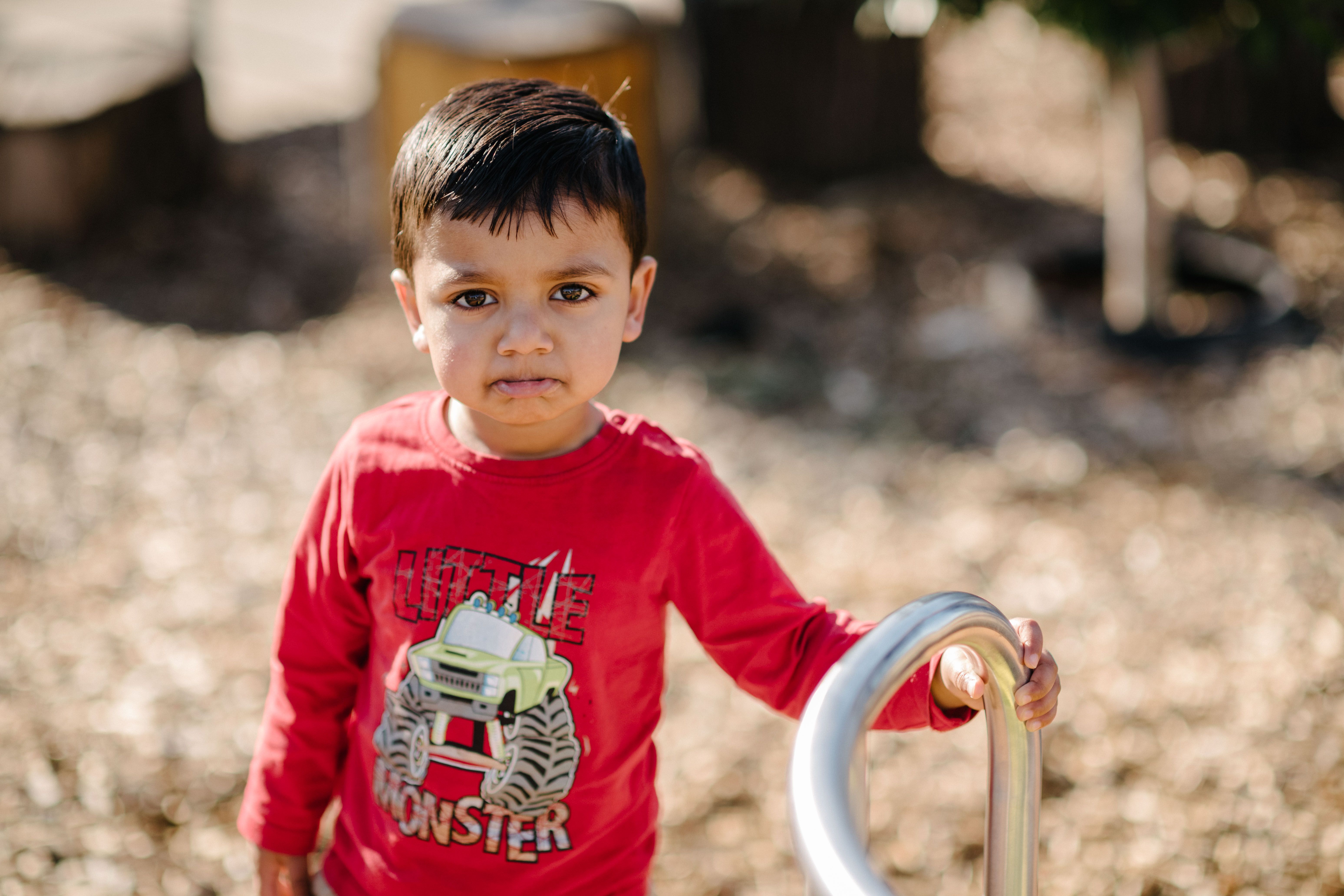Helping Kids Manage Worry And Low Mood
Key points:
- It’s normal for your children to worry or have anxious thoughts sometimes.
- You can help your child regulate their emotions by gently encouraging them to face their fears or by teaching them problem solving techniques for when they feel down.
- When anxiety becomes intense or interferes with day-to-day life, your child may need extra support.
- Kids experience emotional ups and downs just like adults do. But if low mood lasts for an extended period of time it could be a sign of depression, requiring professional help.
When your child is screaming at daycare drop-off or having a meltdown about turning off the light at bedtime, yes it’s a pain. But sometimes there’s a valid reason for this sort of behavior. Consider if something else could be going on. If your kid is genuinely feeling scared or worried, it’s not the time for discipline. Instead, they probably need emotional support.
So how can you spot the difference between misbehavior that’s triggered by fear or worry, and misbehavior that needs discipline? It’s a parenting conundrum but it can be done.
Here are some useful insights and tips to help you support your kids when they’re experiencing anxious thoughts, fears or bouts of low mood.
Low mood in children
Feeling sad sometimes is normal; everyone feels low or down at times including children. However if the feeling is more than just everyday sadness or it goes on for a long time, then low mood may develop into something more serious such as depression. Yes even in kids.
What causes children to worry?
Worry is a normal part of a child's development. It actually serves a useful purpose, helping kids bond with their parents and keeping them safe from unknown dangers (i.e. the toilet flushing!). But for some kids, anxious feelings are more intense and can start to affect their wellbeing.
There are a few theories as to why children (and adults) develop anxiety:
- It could be linked to genes
- It could be due to temperament
- It could be learned from watching others
- It could develop due to a scary or stressful event.
Or it could even be a mix of all these things.
Kids’ worry or anxiety often presents itself in common ways. These are some of the usual culprits:
- Separation anxiety – freaking out when you leave them (even if it’s just walking into the next room)
- Being scared of the dark – whether it’s because of monsters under the bed or fear of being alone at night
- Worries about school – which could be related to performance anxiety or being bullied
- Social anxiety – getting stressed out around other people.
Tips for managing your child’s worry
When your child is distressed or scared of something, your instincts may tell you to remove the source of the fear and shower them in sympathy and reassurance. Experts suggest that an overly protective response like this can actually reinforce the anxiety, sending the message that there is something to be fearful about. Plus, remember that your attention is a reward and so you could be accidentally rewarding anxiety. Instead, stay calm and gently encourage your child to face the scary thing.
Here are two practical strategies you can use to help your child overcome fear or anxiety.
Identify the “worry thought”
Most fears start with a thought that makes kids worry. For example, your potty training child may avoid flushing the toilet because they think they’ll get sucked down. Identifying the “worry thought” and finding an alternative truth will empower them to overcome the fear. Follow these steps:
- Help your child identify their “worry thought” – what they’re thinking about that’s making them worried. Explain that this is just a thought and not something that’s necessarily real.
- Help them come up with another explanation. For example, the loud noise the toilet makes when it flushes is just the dirty water being drained away and can’t suck them in.
- Prompt them to face the fear. This won’t happen overnight and may need to be done in small steps (see ‘fear stepladder’ technique below).
- Use praise and rewards when your child stays calm and is able to face their fear.
These steps will help your kid learn that they can face scary things by themselves, without needing you. And as a bonus they’ll receive a nice little boost to their self-esteem and confidence too.
The ‘fear stepladder’
This technique can help your child work towards overcoming their fear in gradual stages. They’ll first make a list of steps, order them from least scary to most scary, and then work through the steps.
- Help your child identify their overall goal – i.e. to flush the toilet every time they go.
- Help them list all the steps they can follow to get there in order of least scary to most scary. For example, a less scary first step might be watching a video of someone flushing a toilet. Then they can stand in another room while a parent flushes the toilet.
- Give each step a worry rating out of 10 and attach a tangible reward for when your child does it. For example, watching a video of someone flushing a toilet could have a worry rating of two and be rewarded with a small piece of candy.
- Help your child work through the steps until they reach their goal.
This strategy allows your child to work towards the overall goal in stages and be positively rewarded along the way.

When to be concerned about my child’s anxiety
It’s normal for children to have anxious feelings sometimes. But when worry gets over-the-top and starts to affect their life, you may need to do something about it. Your child may develop an anxiety disorder and need some professional help in managing it.
Here are some common signs to watch out for that could indicate excessive worry or anxiety in your child:
- Avoiding specific situations – such as friend’s parties or not wanting to go to school
- Avoiding specific things – such as the vacuum or turning the light off at night
- Crying or getting very angry or upset in response to a specific situation
- Expressing concerns about embarrassing themselves in front of others
- Complaining about physical problems, such as headaches and stomach aches
- Talking frequently about making things “perfect”
- Being shy and withdrawn in social situations
- Increasing behavioral problems, such as getting angry or irritable more frequently than usual, or refusing to do specific tasks (taking the rubbish outside, for example)
- Showing excessive checking behaviors, such as checking that doors are locked or that hands are washed.
While your child will often grow out of their irrational fears and worries, if they’re displaying some of these signs or if you're worried, consider getting some advice from your doctor.

Is my child depressed?
Like us, kids experience ups and downs in life. But while it’s normal for them to feel ‘off’ from time to time, more frequent or extended periods of low mood could be a sign of depression.
As wild as it may seem, young kids can develop depression. This isn’t just ‘feeling sad’, but a serious condition that needs attention.
Common signs to look out for include:
- Feeling sad for long periods of time (more than two weeks)
- Losing interest in activities they used to enjoy
- Irritability and/or restlessness
- Problems sleeping and/or fatigue
- Crying more and being difficult to calm down
- Reports of a change in behavior from their school or daycare, like withdrawing from friends or activities
- Not wanting to play with friends
- Increased sensitivity.
If you’re worried that your child is showing signs of depression, have a chat to your doctor about how you can help them. And try not to get too down about it yourself. While mood and mental health challenges in kids are tough to manage, it’s not impossible.
Tips for managing your child’s low mood
When your child is showing signs of low mood or depression, it’s important to talk to them about it. Encourage them to identify, express and think of ways to improve their negative feelings. Try some of the following strategies.
- Talk about your child’s feelings and what you’ve noticed. Rather than just asking “how have you been feeling”, you might more specifically say, “I’ve noticed that you’ve been quiet after school lately. Has something happened?”
- Point out positives to help your child stop focusing on negative feelings.
- Plan fun activities that your child can look forward to.
- Encourage physical activity – this is a great way to release endorphins, improve mood and support overall wellbeing.
- Support your child’s normal activities. Pulling them away from school, classes or their normal routine can amplify their low mood. So encourage them to keep going and use lots of praise when they participate in activities.
- Teach your child problem solving strategies, so they can learn to come up with solutions to regulate their own mood.
When your child is struggling with a situation that’s causing low mood, encourage them to think of ways to solve the bigger problem, as well as ways to improve their mood right now. For example, playing with a friend or reading a book quietly might be an immediate mood booster to help them get out of a funk.
Regulating emotions is tough work, even as an adult. Spending plenty of quality time with your children will help fill their emotional cup while modeling how you effectively manage your own emotions. And don’t ever think you or your child need to be perfect all the time — everyone knows a little cry once in a while can be just the thing you or your kid needs!
Want to learn more?
Movember launched Family Man to improve the confidence and mental health of dads.
Learn how to master kick-ass parenting strategies by getting started with Family Man. It’s an interactive parenting video series that's expert-backed and funded by Movember.
If research is your thing take a closer look at the evidence behind Family Man.
Or learn more before diving in.